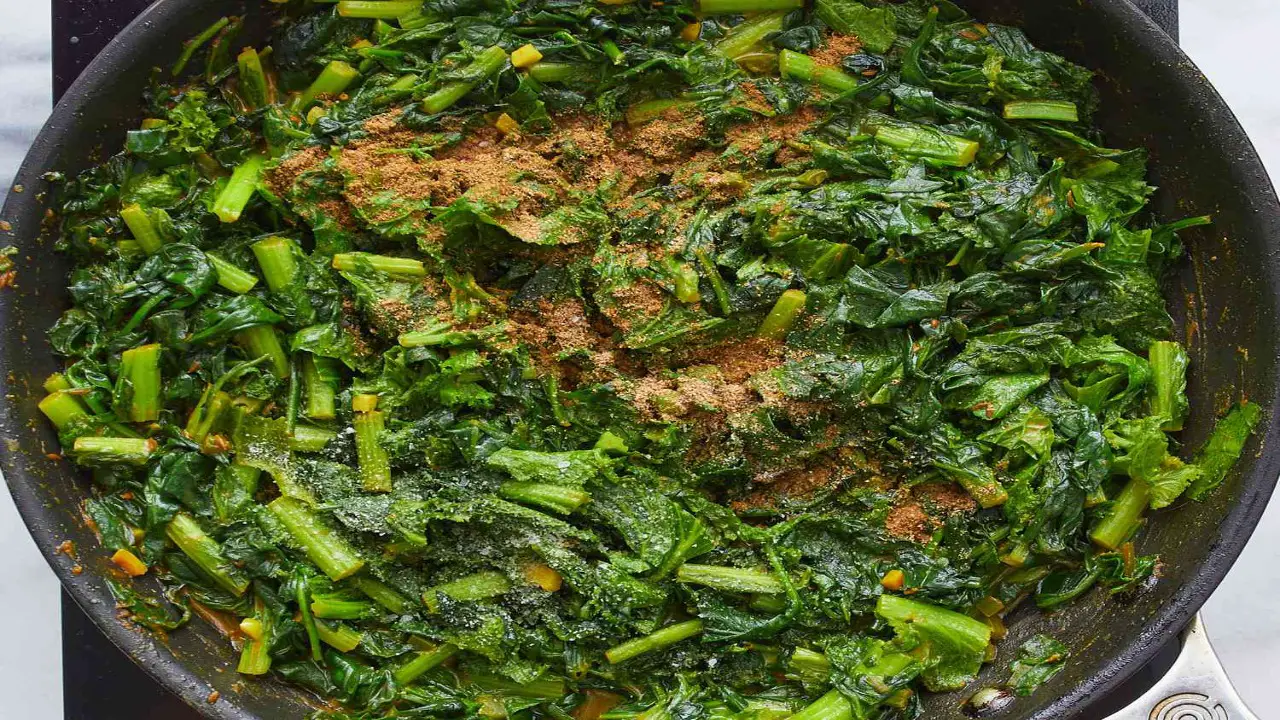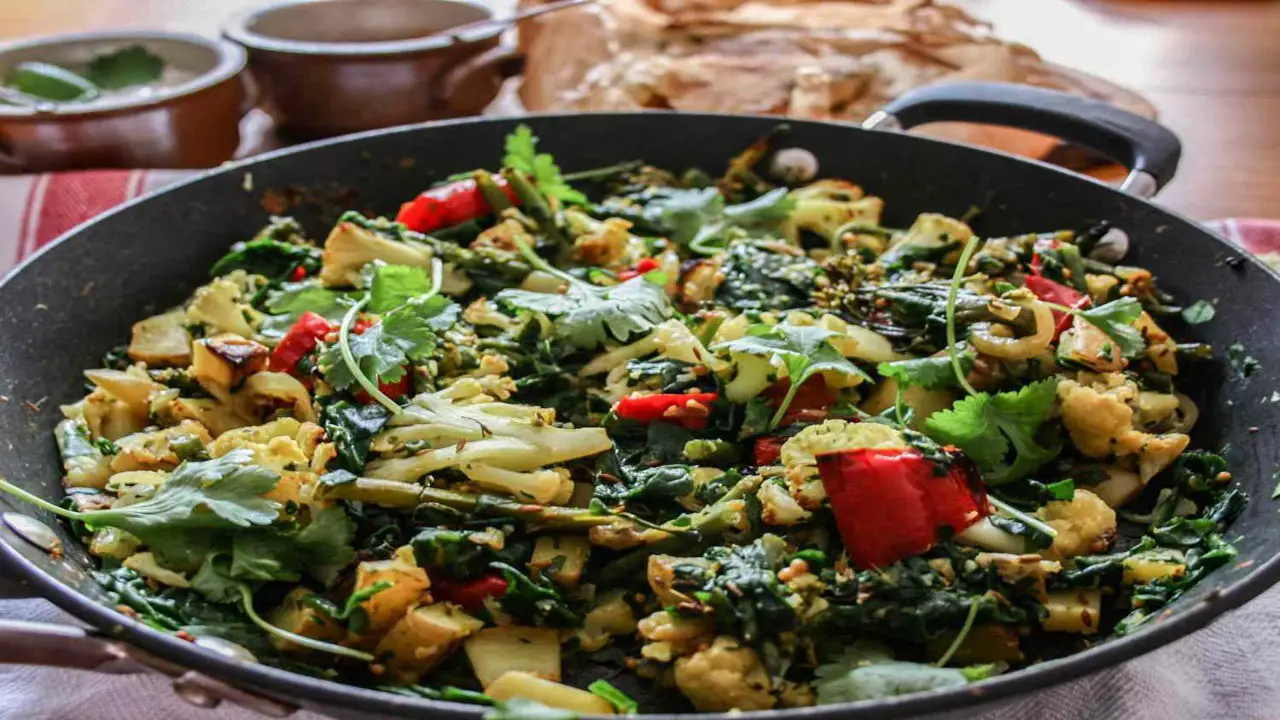Sagh is a traditional Persian stew that has gained popularity for its hearty ingredients and rich flavors. This mouthwatering dish usually consists of tender meat, such as lamb or beef, cooked with onions, garlic, and aromatic spices.
We will guide you through the entire process of making Sagh from scratch. We cover everything from understanding Sagh and its cultural significance to providing a detailed overview of the cooking process, ingredient preparation, and step-by-step instructions. We’ll also share some expert tips and tricks to help you achieve the perfect consistency and flavor.
Get ready to impress your family and friends with your culinary skills as we explore the recipe and variations of this mouthwatering dish. Plus, we’ll delve into the health benefits of incorporating Sagh into your balanced diet.

Sagh Cooking Process

Embark on a culinary adventure with the art of cooking Sagh, a traditional dish that promises to tantalize your taste buds and transport you to exotic lands. This flavorful journey begins with carefully selecting aromatic spices and fresh ingredients to create a harmonious blend of flavors.
Whether you’re a seasoned chef or an amateur cook, mastering the art of cooking Sagh will satisfy your cravings and introduce you to a rich cultural heritage and the joy of experimenting with new recipes. Get ready to indulge in the delightful world of Sagh cooking and create unforgettable dining experiences for yourself and your loved ones.
Overview Of The Cooking Process For Sagh

Sagh is a traditional Persian dish that has been enjoyed for centuries. It is a hearty and wholesome stew made with a combination of meat, beans, and vegetables. The key ingredients in Sagh include lamb or beef, chickpeas, lentils, and a variety of herbs and spices such as turmeric, cinnamon, and saffron.
The dish is slow-cooked to perfection, allowing the flavors to meld together and create a rich and aromatic broth. Sagh is typically served with steamed rice or flatbread, making it a satisfying and complete meal. It reflects Persian cuisine’s emphasis on using fresh ingredients and bold flavors to create unforgettable dishes.
Ingredients Needed For Sagh And Their Preparation
To prepare an authentic Sagh, you will need the following ingredients: fresh spinach leaves, onion, garlic, turmeric powder, cumin seeds, tomato paste, yogurt, salt, pepper, and vegetable oil.
Start by washing the spinach leaves thoroughly and chopping them into small pieces. In a large pan, heat some vegetable oil and sauté finely chopped onions and minced garlic until they become golden brown.
Add cumin seeds and turmeric powder to the pan and cook until fragrant. Then add the chopped spinach leaves and cook until they wilt down.
Next, stir in tomato paste and yogurt to the mixture. Season with salt and pepper according to taste. Cook everything together on low heat for 10-15 minutes until the flavors combine well.
Once cooked, remove from heat and serve hot with rice or bread. Authentic Sagh is a nutritious dish packed with vitamins and minerals from spinach that can be enjoyed as a main course or as a side dish.
Step-By-Step Instructions On How To Cook Sagh

Instructions on How to Cook Sagh Sagh is a delicious, one-pot dish popular in Iran and other parts of the Middle East. It is a hearty dish made with lamb, vegetables, and aromatic spices, all cooked together in an aromatic broth. Here’s how to make it:
- Start by washing the sigh thoroughly to remove dirt or debris.
- Once clean, chop the sage into small pieces, discarding tough stems.
- In a large pot, heat some oil over medium heat. Add chopped onions, garlic, and sauté until translucent and fragrant.
- Add the sage to the pot and stir well to combine with the onions and garlic. Cook for a few minutes until the sage begins to wilt.
- Season with salt, pepper, and other desired spices or herbs. You can also add some vegetable broth or water to create more flavor.
- Cover the pot and let the sigh cook for about 10-15 minutes, or until it has softened and is tender.
- Give it a taste test and adjust seasonings if needed.
- Serve hot as a side dish or as part of a larger meal.
Tips And Tricks For Achieving The Perfect Sign Consistency And Flavor
When cooking the perfect Sagh, achieving the right consistency is key. The ideal Sagh should have a smooth and creamy texture that is neither too thick nor too watery. To achieve this, it is important to cook the ingredients for the right amount of time and use the correct liquid ratios to solids.
Adding too much liquid can result in a thin and runny Sagh, while not enough liquid can make it lumpy and thick. It is also important to stir the mixture constantly while cooking to prevent any clumps from forming. With practice and attention to detail, you can master the art of always achieving the perfect Sagh consistency.
Common Mistakes To Avoid When Cooking Sigh

It is important to avoid certain common mistakes to ensure a delicious and perfectly cooked meal. Overcooking can lead to dry and tasteless food, so monitor cooking times and use timers if necessary. Excess water can result in soggy dishes, so follow recipe instructions carefully and measure water accurately.
Rinse rice before cooking to remove excess starch and prevent clumping. Under-seasoning can leave your food bland, so taste as you cook and adjust seasoning accordingly. Lastly, allow your dish to rest a few minutes after cooking to allow flavors to meld together before serving.
Serving Suggestions And Accompaniments For Sigh
To enhance your Sagh experience, consider implementing these suggestions. Firstly, try experimenting with different brewing methods such as French press, pour-over, or espresso to find your preferred taste and strength.
Additionally, you can explore various flavor profiles by choosing single-origin or blended Sagh beans. Don’t forget to properly store your Sagh beans in an airtight container away from light and moisture to maintain their freshness. Lastly, consider pairing your Sagh with complementary flavors like dark chocolate or nuts to elevate the overall taste experience.
Variations And Adaptations Of The Traditional Sage Recipe

Sagh, a popular dish in different regions, exhibits unique variations that showcase diverse flavors and ingredients. These adaptations often involve including nutritious vegetables such as spinach or kale, enhancing the overall nutritional value of the dish.
Moreover, individuals following a vegan or vegetarian lifestyle can enjoy sagh by substituting meat with plant-based protein sources. The cooking time and method may differ depending on the specific adaptations made to the recipe. Exploring the various variations of sigh offers a delightful culinary journey, allowing individuals to cater to their preferences and tastes.
Health Benefits Of Consuming Sagh As Part Of A Balanced Diet

Adding sage to your balanced diet can provide numerous health benefits. This nutrient-rich food contains essential vitamins and minerals that contribute to overall well-being. Incorporating sighs into your meals can aid digestion and promote a healthy gut.
In addition, the antioxidants present in sagh strengthen the immune system and offer protection against chronic diseases. The high fiber content of sagh also helps regulate blood sugar levels and supports weight management efforts. By including a sigh in your diet, you can improve your overall health and wellness.
Conclusion
sigh is not only a delicious dish but also a nutritious one that can be incorporated into a balanced diet. By carefully following the step-by-step instructions and considering the tips and tricks, you can achieve the perfect consistency and flavor in your sigh.
It is important to avoid common mistakes while cooking sigh, such as overcooking or under-seasoning, as these can affect the taste and texture of the dish. Once your sage is ready, you can serve it with rice, bread, or other accompaniments to enhance the overall meal experience.
Additionally, there are various variations and adaptations of the traditional sage recipe that you can explore to add your own personal touch and experiment with different flavors. So go ahead, enjoy the health benefits of sagh, and savor its rich flavors.
Frequently Asked Questions
1.What Is Sah?
Ans: Sah is a flavorful Middle Eastern dish made with tender, slow-cooked meat and fragrant spices. It’s commonly served over rice or flatbread with a dollop of yogurt or tahini sauce. With its rich flavors and melt-in-your-mouth texture, sah is often enjoyed during special occasions or family gatherings.
2.Where Can I Buy It And How Much Does It Cost?
Ans: You can find sage, a traditional Iranian dish, at Persian restaurants or specialty stores. Middle Eastern grocery stores may also carry sigh ingredients like dried herbs and spices. The cost of such varies depending on where you buy it and the quantity you purchase. It’s best to compare prices and quality before making a purchase.
3.Is There A Difference Between The “Pure” And The “Commercial”?
Ans: There is a distinction between “pure” and “commercial” sigh. While pure sagh is made using authentic ingredients and traditional cooking methods, commercial sagh may contain additives or preservatives for longer shelf life or mass production purposes. Pure sage is often considered superior in taste and quality compared to commercial versions.
4.Can I Make My Own Sah At Home?
Ans: Yes, it is absolutely possible to make your own sah at home. You will need lamb or beef, onions, garlic, ginger, and spices. There are numerous online recipes available that provide step-by-step instructions for making sah. Don’t be afraid to experiment with different spice combinations to find the flavor profile that suits your taste.
5.Are There Any Drawbacks To Drinking Sagh?
Ans: While consuming sagh can offer numerous health benefits, it’s important to be aware of potential drawbacks. Excessive intake of sagh may lead to digestive issues like bloating or diarrhea. Additionally, individuals with a history of kidney stones should consume sagh in moderation due to its high oxalate content. Obtaining safe from reputable sources is crucial to ensure it is free from contaminants or pesticides.
